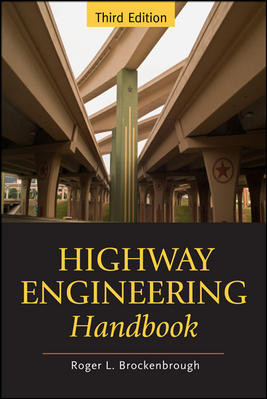Is Another Boom and Bust Cycle Coming To Engineering Staffing?
With $130 billion in Federal stimulus money heading into the economy for infrastructure, the demand for engineering talent will be enormous and competition for that talent will rage. Whether it’s for designing and building new highways or bridges, water systems, transit lines or green buildings, proposed federal stimulus spending will see a massive change in how engineering staffing models are employed and utilized by the building design and construction industries.

SALVUCCI
But I have a few questions.
Will the coming hiring binge sow the seeds for a counter cycle two or three years from now that will eliminate many of the talented engineers when the stimulus money is spent? Will the boom lead to an inevitable engineering staffing bust as has so often happened in the past? Unfortunately, my 31 years experience says there will be a bust and it will be larger than necessary.
Mainly it’s because the engineering staffing model utilized by many companies calls for fully staffing engineering departments long before and long after the work load on projects reaches a peak. That model creates excessive manpower that sits idle longer than needed while the firms seeks new business or waits for a project to start. It also means that talented engineers aren’t where they are needed.
That’s why when I look at the engineering staffing picture situation today, I worry. I see the counter staffing cycle where good engineers have their careers disrupted.
I agree with Phil Trahanas’ and Nicholas Nash’s observations in their February 4 Viewpoint “Engineering Talent is the Best Stimulus” that the U.S. has a shortage of engineers. But some portion of the shortage may well be caused by a serious disconnect between the engineering talent available and the projects or locales where they are needed. That disconnect will be exaggerated as firms staff up to meet the new stimulus driven demand and in so doing, put pressure on their bottom line with higher fixed costs.
So, what’s the solution?
One idea is to implement engineering staffing models that recognizes the need for a core component of engineers — engineering managers — and quantifies the need to augment the staff when necessary to handle the increasing workload generated by any project.
An important element in this process is long-term planning where engineering staffing needs are forecast. I think such planning should be based on conservative estimates of staffing needs and the creation of a core staff model. Once operating, the core staff is always in a position to determine the augmentation requirements for any project and timing for adding temporary staff.
In almost any project, it’s easy to assume that 30% of the work will fall on the core staff for the duration of the project, with augmentation added in 15% or 20% increments until ideal staffing is achieved. On the back end of the project timeline, the augmented staff can be eliminated in a fairly short period of time. Managed correctly, the core staff model will reduce project overhead costs. The core staff model also adds another benefit; it allows management to more accurately choose engineers and technical personnel with the right expertise for the job at hand.
Where are the engineers willing to be part of an augmented team?
Well, history demonstrates that as much as 25% of the workforce sees the ability to earn premium wages as contract employees as very important, even against long-term security. For many reasons, there is a solid group of professionals who seek out shorter term challenges and are motivated by the chance to work in different places and on different projects.
By integrating a core staff with contract engineers, fixed costs are lowered, better cost controls can be applied, and a better alignment of specific expertise with the project’s demands can be achieved.
The increased federal stimulus program spending gives many in the engineering and construction industries a real opportunity to implement a new engineering staffing paradigm that can maximize profitability and reduce the impact of a boom and bust employment environment. Let's make sure the stimulus isn't a thief in the night.
The work derived from the Stimulus should be providing jobs for Americans. The designs could be farmed out to foreign country engineering firms in their entirety and then the Stimulus ...
If America wants to correct the shortage of engineers, there must be jobs available to attract students to devote years of schooling to the profession. A message to American Engineering firms, "Don't farm your work out to India for decades and then complain about a shortage of American engineers when you need them."
I have worked in commercial construction since 1965, and I have heard this same argument from employers from the beginning. "We are not going to have a training program for carpenters (Enter trade as desired.) and then have them go somewhere else for more money." The next topic of the meeting, "How can we find more skilled tradesmen to get our jobs done on time?"
Anonymous is correct. When I started in 1977, private sector engineers were paid a lot more than public sector engineers. Now the opposite is true. Private firms have taken advantage...
Disappointed
You might want to read:<br/> <br/>U.S. Engineers At Record Unemployment <br/><a href="http://www.investors.com/NewsAndAnalysis/Article.aspx?id=481800" rel='nofollow'>http://www.investo...
U.S. Engineers At Record Unemployment
http://www.investors.com/NewsAndAnalysis/Article.aspx?id=481800
Highly Qualified Engineers Having Trouble Finding Work
Age, too many candidates are problems for some experienced engineers
http://www.designnews.com/article/306900-Highly_Qualified_Engineers_Having_Trouble_Finding_Work.php
AND
How Young Engineers and Our Economy Are Betrayed
http://www.creators.com/opinion/phyllis-schlafly/how-young-engineers-and-our-economy-are-betrayed.html
Even Tech Execs Can't Get Kids to be Engineers
by Ann Grimes, The Wall Street Journal, March 29, 2005, Pg. B1
http://www.bearcave.com/misl/misl_other/young_engineers.html
"WHAT ENGINEERING SHORTAGE"
http://www.tbp.org/pages/Publications/Bent/Features/Su09Brown.pdf
and watch these videos!
http://www.youtube.com/watch?v=mYM8MIXCvQQ
http://www.youtube.com/watch?v=9LXvGD5HgIg
http://www.youtube.com/watch?v=58Dr8nEVTvQ
It seems to be a paradox. The ENR says there is a shortage of engineers yet here in Phoenix the help<br/>wanted section is only 3 pages for every job listed, and maybe one or two engin...
wanted section is only 3 pages for every job listed, and maybe one or two engineer job. Mostly no engineer jobs. A friend is a mechanical engineer P.E. and he is young and going under money wise
because the company promised him 20 hrs but reniged. He would relocate but his young wife is very sick with an illness that baffles the Doctors. I am a civil P.E. older and doing some contract work and living on social security with medicare.but leary of what is going to happen with this national health care plan the President is proposing. My wife has Leukemia and I take tranqulizers prescribed by a Doctor to keep me stable. I have been designing under ground vaults for a precast co. and performing wind and seismic analysis for large homes. If I did not have work to keep my mind busy I do not know
what would happen. I want to work and my work gets approved by the city or county plan examiner.
I am able to work and want to work. My Dad instilled in me a work ethic. I have a lot to offer but feel constrained by what is happening to our poor bleeding country.
David M. Niese P.E.




